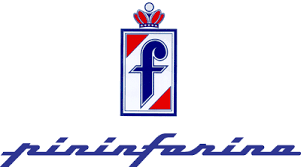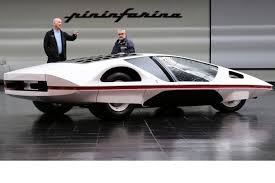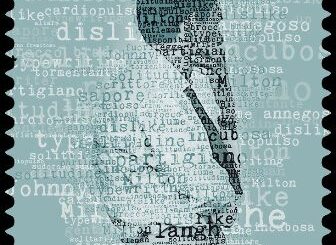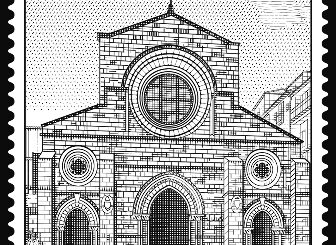POSTE ITALIANE 53^ emissione del 08 ottobre 2020 di un francobollo dedicato alla Pininfarina Modulo, nel 50° anniversario della presentazione al Salone dell’Automobile di Ginevra
POSTE ITALIANE 53^ emissione del 08 ottobre 2020 di un francobollo dedicato alla Pininfarina Modulo, nel 50° anniversario della presentazione al Salone dell’Automobile di Ginevra
Il Ministero dello Sviluppo con le Poste Italiane emette l’8 ottobre 2020 un francobollo ordinario appartenente alla serie tematica “le Eccellenze del sistema produttivo ed economico” dedicato alla Pinifarina Modulo, nel 50° anniversario della presentazione al Salone dell’Automobile di Ginevra, relativo al valore della tariffa B, corrispondente ad €1.10.
- data: 08 ottobre 2020
- dentellatura: 11
- stampa: rotocalcografia
- tipo di carta; carta bianca patinata neutra -autoadesiva non fluorescente
- stampato: I.P.Z.S. Roma
- tiratura: 400.000
- dimensioni: 40 x 30 mm
- contenuto foglio: 45 esemplari
- valore: B = €1.10
- bozzettista: a cura della Pininfarina e ottimizzato dal Centro Filatelico della Direzione Operativa dell’Istituto Poligrafico e Zecca dello Stato S.p.A.
- num. catalogo: Michel 4078 YT _______ UNIF ________
- La vignetta: riproduce, la Modulo, concept car su base meccanica Ferrari, di cui quest’anno ricorre il 50° anniversario dal suo debutto, presentata al Salone dell’Automobile di Ginevra nel 1970; in alto al centro, si staglia il logo del 90° anniversario della Pinifarina. Completano il francobollo la leggenda “1970: MODULO” la scritta “ITALIA” e l’indicazione tariffaria “B”.
Se sei interessato all’acquisto di questo francobollo lo puoi acquistare al prezzo di € 1.50. Inviandomi una richiesta alla email: protofilia1@gmail.com

Un prototipo sperimentale
La Modulo è caratterizzata da due gusci di carrozzeria sovrapposti, separati da una scanalatura rettilinea all’altezza della cintura. Frontale, padiglione e cofano sono conglobati in un’unica curvatura ad arco; l’ampio parabrezza è delimitato da montanti tronco-conici che alleggeriscono notevolmente l’estesa superficie del frontale. L’andamento stilistico della vetratura laterale è ripetuto in depressione sulla parte inferiore in lamiera del modulo. La parte posteriore attira l’attenzione per la carenatura delle ruote che si raccorda alla carrozzeria, creando un motivo cilindrico di particolare originalità. L’accesso all’abitacolo si ottiene facendo scorrere su apposite guide l’intera cupola, parabrezza compreso. L’interno dell’abitacolo è essenziale con due sedili di forma anatomica molto allungati e avvolgenti per una corretta posizione di guida e un perfetto ancoraggio del pilota e del passeggero. Interessante l’adozione di due elementi sferici rotanti con funzione di aeratore orientabile e di supporto per i comandi principali. Ferrari Modulo è una berlinetta speciale, estrema, monovolume. Prototipo unico sperimentale, realizzato su telaio Ferrari 512S, di una vettura futuristica che esce dagli schemi del linguaggio stilistico Presentata al Salone dell’Automobile di Ginevra nel 1970 (nel colore celestino perlato), ha vinto 22 premi internazionali di design per una “ricerca di forma pura nella sua voluta geometricità”. La vettura è stata scelta a rappresentare alla Expo di Osaka del 1970 l’alta carrozzeria italiana e viene esposta a Città del Messico nel 1971 quale ambasciatrice del design italiano tradizionale, espressiva dell’inizio degli anni Settanta.

La Pininfarina è un’azienda italiana, attiva nel settore delle carrozzerie per automobili, fondata a Torino il 22 maggio 1930 come Società anonima Carrozzeria Pinin Farina da Battista Farina (detto Pinin ovvero Giuseppino in piemontese, in riferimento alla sua somiglianza col padre, Giuseppe appunto), dopo la sua fuoriuscita dall’impresa familiareStabilimenti Farina, gestita con il fratello Giovanni Farina. L’atto di costituzione in Società Anonima è firmato dai soci Battista Farina, Giovanni Battista Devalle, Gaspare Bona (che divenne primo presidente), Pietro Monateri, Arrigo De Angeli,Vincenzo Lancia. Fino al 2011 l’azienda, oltre ai servizi di progettazione e consulenza, era impegnata anche nella produzione di alcuni modelli (da essa disegnati) presso i propri stabilimenti. La società ha disegnato più di 100 Ferrari in 65 anni, si tratta della collaborazione più forte per la carrozzeria torinese, collaborazione che continua tutt’oggi.
Storia della Pininfarina
Sorta come una piccola attività artigianale dedita alla costruzione di carrozzerie su ordinazione di facoltosi clienti privati, grazie al finanziamento di una zia della moglie e al fattivo appoggio di Vincenzo Lancia, che per primo credette nelle intuizioni dell’amico Pinin Farina al quale poi fece carrozzare molte delle sue automobili, divenne negli anni un’industria con la capacità di offrire al mercato automobilistico progettazioni complete di autoveicoli e, più in generale, di mezzi di trasporto, concepiti anche con l’ausilio di ricerche ingegneristiche avanzate. Pinin Farina fu tra i primi a interessarsi concretamente di aerodinamica, e il figlio Sergio apportò all’industria un approccio più ingegneristico e meno empirico.
Nei primi anni di vita, fino allo scoppio della seconda guerra mondiale, la società si fece conoscere per la costruzione artigianale e in piccola serie di carrozzerie particolari progettate su meccaniche in primis del socio Vincenzo Lancia in particolare su Dilambda, dell’Alfa Romeo, della Hispano-Suiza e della FIAT.
È nel momento della prima ricostruzione postbellica che Pininfarina concepì la prima automobile di fama mondiale, la Cisitalia 202. Presentata nel 1947, fu la prima autovettura che ottenne l’onore di un posto in un museo, il MOMA di New York.
Da quel momento conosciuta in tutto il mondo, la Pininfarina ha disegnato lo stile di centinaia di autovetture, talune delle quali famose e rinomate. L’azienda è poi passata, a partire dal 1961, sotto la guida del figlio del fondatore, Sergio, designer di fama mondiale, che ha proseguito la ricerca sempre restando nel campo delle automobili.
Già negli anni cinquanta iniziò la collaborazione con case automobilistiche straniere, ad esempio la francese Peugeot con cui il rapporto continua anche ai giorni nostri.
Sempre della fine degli anni ’50 è anche la trasformazione da struttura artigianale ad una vera realtà industriale. L’evento di passaggio è la produzione per conto della Alfa Romeo di 27.000 Giulietta Spider nata in Pininfarina ispirandosi, per il design dell’auto, alla Lancia Aurelia B24.
Il decennio 1960-1970 è quello che segna la creazione di alcuni tra i modelli più famosi, come l’Alfa Romeo Spider “Duetto”, la Lancia Flaminia, la Lancia Flavia coupé, la Dino 246 e le Fiat”124 Sport Spider”, “Dino Spider”.
POSTE ITALIANE 53rd issue on 08 October 2020 of a stamp dedicated to the Pininfarina Modulo, on the 50th anniversary of its presentation at the Geneva Motor Show
The Ministry of Development with the Italian Post Office will issue on 8 October 2020 an ordinary stamp belonging to the thematic series “The Excellences of the productive and economic system” dedicated to the Pinifarina Modulo, on the 50th anniversary of its presentation at the Geneva Motor Show. at the value of tariff B, corresponding to € 1.10.
- date: 08 October 2020
- indentation: 11
- printing: rotogravure
- kind of paper; neutral white coated paper – self-adhesive non-fluorescent
- printed: I.P.Z.S. Rome
- circulation: 400,000
- dimensions: 40 x 30 mm
- sheet content: 45 copies
- value: B = € 1.10
- sketch designer: edited by Pininfarina and optimized by the Philatelic Center of the Operational Management of the State Printing and Mint Institute
- num. catalog: Michel______ YT_______ UNIF _________
- The cartoon: reproduces the Modulo, a concept car based on Ferrari mechanics, which this year marks the 50th anniversary of its debut, presented at the Geneva Motor Show in 1970; at the top center, the logo of the 90th anniversary of Pinifarina stands out. The legend “1970: MODULE” is completed by the writing “ITALY” and the tariff indication “B”.

An experimental prototype
The Module is characterized by two overlapping body shells, separated by a straight groove at the height of the belt. Front, pavilion and hood are incorporated in a single arched curvature; the large windshield is delimited by truncated cone uprights which considerably lighten the extensive surface of the front. The stylistic trend of the side glazing is repeated in depression on the lower sheet metal part of the module. The rear part attracts attention for the fairing of the wheels that connects to the bodywork, creating a cylindrical pattern of particular originality. Access to the passenger compartment is obtained by sliding the entire dome, including the windscreen, on special guides. The interior of the passenger compartment is essential with two anatomically shaped seats that are very elongated and enveloping for a correct driving position and perfect anchoring of the rider and passenger. The adoption of two rotating spherical elements with the function of an adjustable aerator and support for the main controls is interesting. Ferrari Modulo is a special, extreme, minivan berlinetta. Unique experimental prototype, built on a Ferrari 512S chassis, of a futuristic car that breaks the mold of the stylistic language. Presented at the Geneva Motor Show in 1970 (in the pearl light blue color), it won 22 international design awards for a “research of pure form in its intended geometry “. The car was chosen to represent the high Italian bodywork at the Osaka Expo in 1970 and was exhibited in Mexico City in 1971 as an ambassador of traditional Italian design, expressive of the early seventies.

Pininfarina is an Italian company, active in the car bodywork sector, founded in Turin on May 22, 1930 as an anonymous company Carrozzeria Pinin Farina by Battista Farina (called Pinin or Giuseppino in Piedmontese, in reference to his resemblance to his father, Giuseppe precisely ), after his departure from the family business Estabilimenti Farina, managed with his brother Giovanni Farina. The deed of incorporation into an anonymous company is signed by the partners Battista Farina, Giovanni Battista Devalle, Gaspare Bona (who became the first president), Pietro Monateri, Arrigo De Angeli, Vincenzo Lancia. Until 2011 the company, in addition to the design and consulting services, was also engaged in the production of some models (designed by it) at its own factories. The company has designed more than 100 Ferraris in 65 years, this is the strongest collaboration for the Turin bodywork, a collaboration that continues today.
History of Pininfarina
Established as a small artisan business dedicated to the construction of body shops to order for wealthy private customers, thanks to the financing of an aunt of his wife and the active support of Vincenzo Lancia, who first believed in the intuitions of his friend Pinin Farina who then had the bodywork over the years many of its cars became an industry with the ability to offer the automotive market complete designs of motor vehicles and, more generally, of means of transport, also conceived with the aid of advanced engineering research. Pinin Farina was among the first to take a concrete interest in aerodynamics, and his son Sergio brought a more engineering and less empirical approach to the industry.
In the first years of life, until the outbreak of the Second World War, the company became known for the handcrafted construction and in small series of particular bodyworks designed on mechanics first of all by the partner Vincenzo Lancia in particular on Dilambda, Alfa Romeo, Hispano-Suiza and FIAT.
It was at the time of the first post-war reconstruction that Pininfarina conceived the first world-famous automobile, the Cisitalia 202. Presented in 1947, it was the first car that obtained the honor of a place in a museum, the MOMA in New York.
Since that moment known all over the world, Pininfarina has designed the style of hundreds of cars, some of which are famous and renowned. The company then passed, starting in 1961, under the guidance of the founder’s son, Sergio, a world-famous designer, who continued his research while remaining in the field of automobiles.
Collaboration with foreign car manufacturers began in the 1950s, for example the French Peugeot with which the relationship continues to this day.
Also at the end of the 1950s is the transformation from an artisan structure to a true industrial reality. The passing event is the production on behalf of Alfa Romeo of 27,000 Giulietta Spider born in Pininfarina, inspired by the Lancia Aurelia B24 for the design of the car. The decade 1960-1970 marked the creation of some of the most famous models, such as the Alfa Romeo Spider “Duetto”, the Lancia Flaminia, the Lancia Flavia coupé, the Dino 246 and the Fiat “124 Sport Spider”, “Dino Spider”.
If you are interested in purchasing this stamp, you can buy it for € 1.50. By sending me a request to the email: protofilia1@gmail.com






